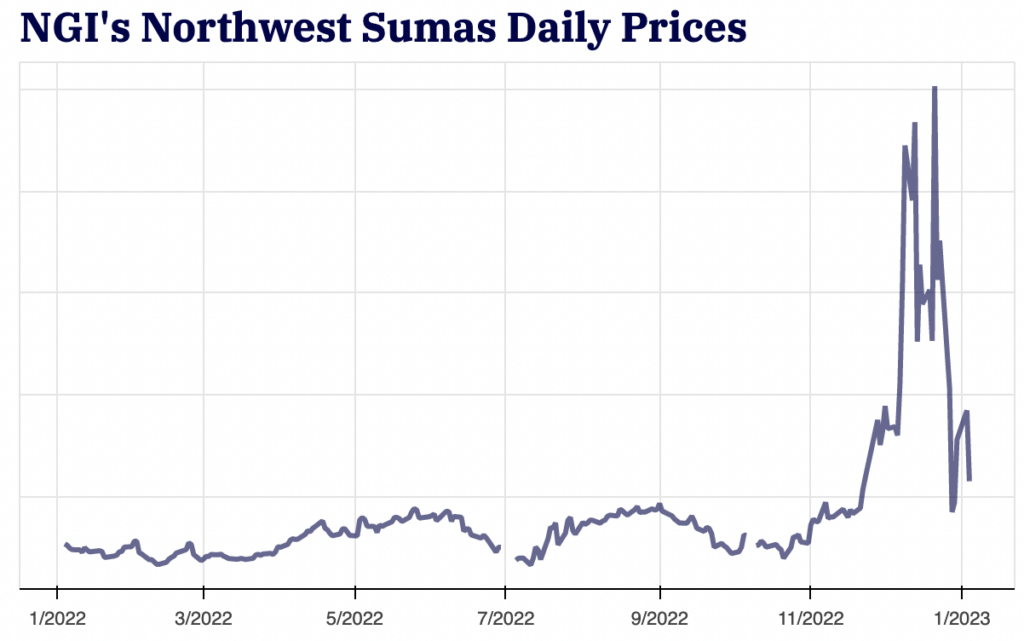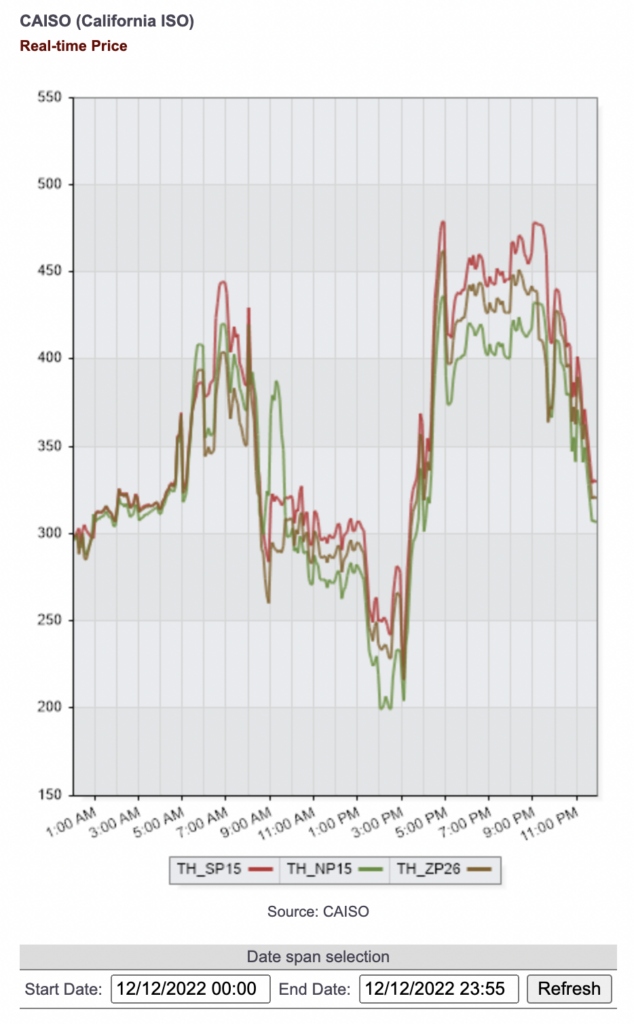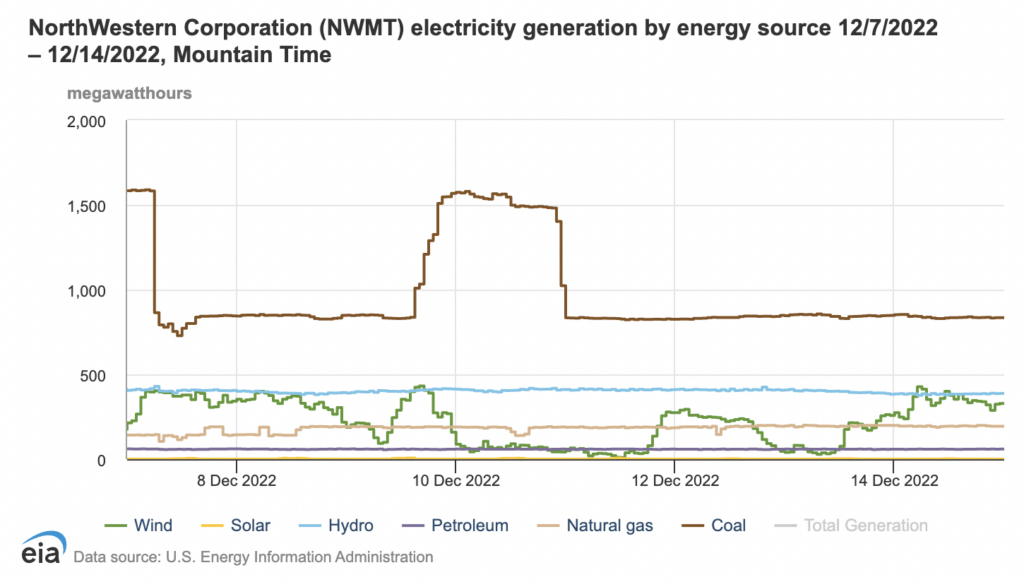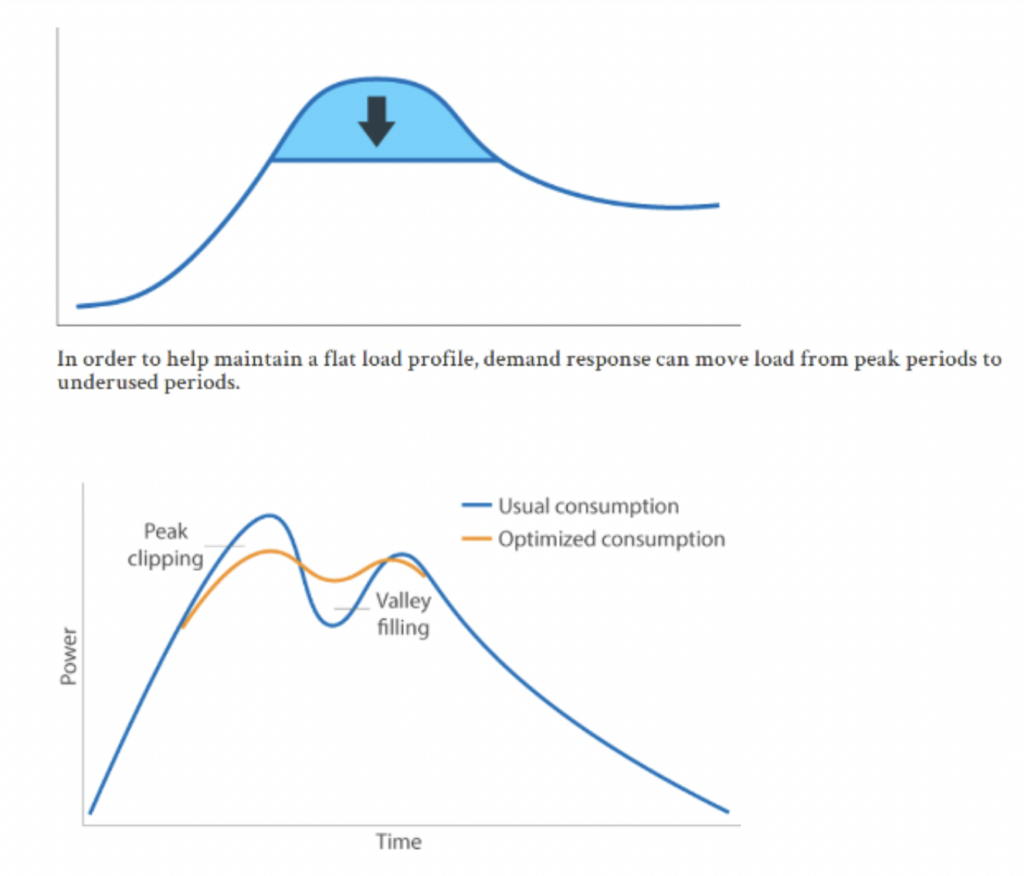Customer-side resources can reduce risks from volatile energy prices
Winter is here. It’s barely February and we’ve already witnessed the value of a diversified energy system and the risks that come from fossil fuels. Volatile fossil fuel prices are causing concern for customers that end up footing the bill when their utility purchases fossil-fueled power. By accelerating our investments in customer-side resources, we can better manage loads and reduce our exposure to spiking energy prices while also making communities more resilient.
What’s happening?
Cold weather causes peaks in energy demand, putting stress on the supply side of the energy system. Utilities often balance their system and fill in gaps with purchases from wholesale power markets. This is especially true during high peak demand periods. As we’ve all witnessed over the last year, oil and gas prices are higher than usual, thanks in part to Russia’s war on Ukraine, global shifts in the fossil fuel trade, and lasting impacts from COVID. Increasing fossil fuel prices within power markets, coinciding with a cold winter, means stress on our energy system and increased energy bills for customers.
December 12, 2022, a mild day for the Northwest, provides insight into this dynamic. Prices for Sumas (Figure 1), the primary hub for fossil gas flowing from northeast British Columbia to western Washington and Oregon, began escalating as winter set in, and skyrocketed on December 12.

If we zero in on December 12, we can see an even more pronounced spike in power market prices. Real-time prices from the California Independent System Operator (CAISO), which operates a wholesale energy market, rapidly spiked the morning of December 12 (Figure 2), reaching nearly $475/MWh. Day-ahead prices also spiked, nearing $550/MWh. CAISO demand peaked around 30,000 MW on December 12, which would normally would result in a price of around $100/MWh. However, due to the stress on the energy system, our reliance on fossil gas to provide peaking services, and spiking fossil gas prices, CAISO prices were 4-5 times what they should have been.


There were other factors, of course, that contributed to these high wholesale power market prices. Contributing factors include pipeline constraints in British Columbia and southern California, lower than average hydropower storage levels, and maintenance and forced outages at thermal plants, such as the Colstrip coal plant (Figure 3).

However, it is concerning that power market prices – driven by fossil gas prices – this high are occurring at the beginning of winter. Should another cold snap occur in February or March, when fossil gas storage is depleted from months of winter use, we could witness even higher and more prolonged fossil gas prices. These high costs will end up flowing through to customers via their energy bills.
How can we protect customers from volatile pricing?
The Northwest must invest in customer-side resources that will give us the ability to better manage load. Through energy efficiency, load management, and distributed renewable generation and storage we can reduce periods of peak demand, thereby diminishing the need for fossil gas peaker plants.
Energy efficiency will reduce overall demand for electricity, shrinking the duration and the severity of peak periods. Targeted efficiency and weatherization investments will directly reduce peak usage during both winter and summer peaks. Additionally, energy efficiency upgrades can lower customer bills, especially for lower income customers, sometimes by a substantial amount. The Northwest has a strong history of energy efficiency, saving more than 7,200 aMW of energy from 1978-2019. However, electricity demand in the Northwest is expected to increase by about 25% over the next 20 years, as we electrify our transportation and buildings. In order to continue to deliver reliable, affordable, and equitable electricity in the coming years, aggressive energy efficiency deployment is non-negotiable.
Load management allows utilities the ability to directly or indirectly reduce demand for electricity. Demand response programs, one form of load management, reduces demand through either peak load reduction or time-shifting (Figure 4). By compensating customers for curtailing their energy usage, utilities can reduce periods of peak demand or shift peak demand to a time of lower demand. Historically, the Northwest has not needed to manage customer load. Now, that has changed as technology has improved and greater balance between customer demand and supply resources is needed. The Northwest Power and Conservation Council, in the 2021 Northwest Power Plan, estimates at least 2,500 MW of additional winter load reduction potential and 3,500 MW of summer load reduction potential. Electric vehicles, hot water tanks, and heating and cooling systems provide opportunities for programs that time their usage to reduce stress on the grid, simultaneously reducing customers’ bills.

Distributed renewable energy such as rooftop solar or community wind and solar projects, increases community resilience and helps the region take advantage of the benefits of generation across a broad geographic area.
Similarly, distributed storage also improves community resilience. Storage, such as batteries, allows individuals or communities to store energy in anticipation of electricity outages, severe weather, or when the energy system needs to reduce peak usage. Coupling distributed renewable energy projects with storage maximizes the value of both resources and helps utilities manage their grid.
Finally, a holistic approach to operating our energy grid will only be achieved with better distribution system planning that links all these resources together to benefit customers. Technology advancements and facilitation by third-party providers is resulting in a more active role for customers to provide value to the system by integrating their demand side resources into the grid. However, large-scale uptake of these technologies will require upgrades to the distribution system – the lines, wires, and supporting infrastructure that connects buildings to the transmission grid. The process of planning for this major shift in the distribution system and electric grid is in need of an overhaul; we must ensure that customers are part of the solution in an equitable fashion that builds resilience and lowers bills. To learn more about distribution system planning for customer-side resources, watch our 2021 Lunch & Learn webinar, “Getting the Most Value out of Customer-side Resources.”
Our energy system is undergoing dynamic shifts, both on the supply and the demand side. Extreme weather events and increasing electric loads will require us to rethink how we manage load. Fortunately, customer-side resources and technological innovations can help us to build an energy system that can be better managed – a phenomenon we call the Harmonious Grid. Ultimately, a harmonious grid that allows us to better manage load will create an energy system that is reliable, affordable, and equitable and reduce the risks that come from fossil fuel price volatility.
Now is the time for utilities, governing boards, and regulators to accelerate investments in customer-side resources and the technologies that support the interactive nature of our modernizing energy system.

